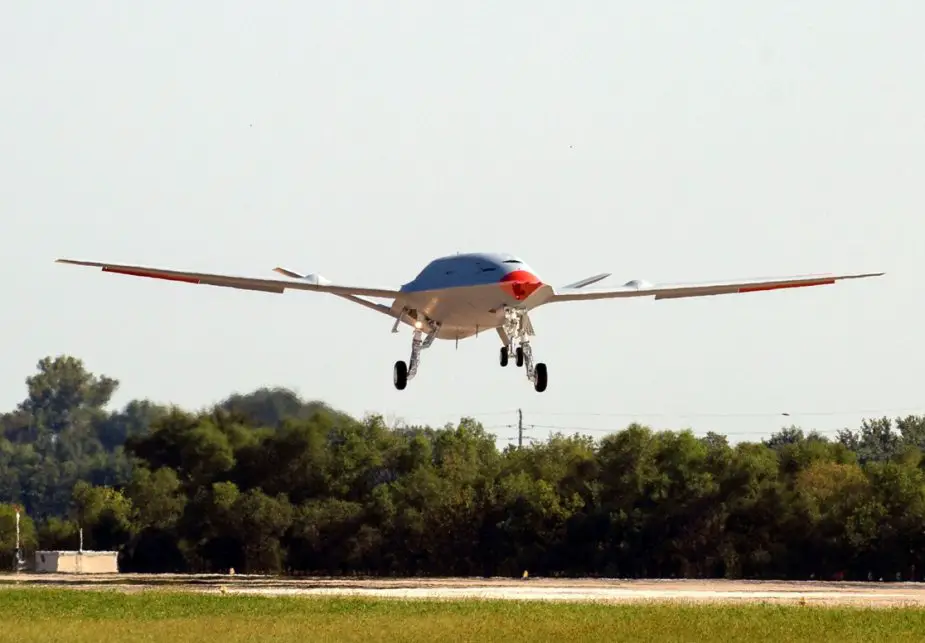Breaking news
Boeing MQ-25A Stingray refueler UAV makes first test flight for U.S. Navy.
The prototype for U.S. Navy’s first unmanned aerial refueler made its first test flight from an airfield in Illinois, Boeing announced on Thursday, as Sam LaGorne reports on USNI News.
 Boeing MQ-25A Stingray takes its first flight on Sept. 19, 2019 (Picture source: Boeing)
Boeing MQ-25A Stingray takes its first flight on Sept. 19, 2019 (Picture source: Boeing)
The MQ-25A Stingray T1 test airframe flew for two-hours after taking off from the MidAmerica regional airport. The aircraft was under the control of Boeing test pilots operating the aircraft from a ground station. The company moved the aircraft there in late April from its aviation manufacturing facility outside of St. Louis.
“The aircraft completed an autonomous taxi and takeoff and then flew a pre-determined route to validate the aircraft’s basic flight functions and operations with the ground control station,” the company said. “T1 received its experimental airworthiness certificate from the FAA in September, verifying that the air vehicle meets the agency’s requirements for safe flight. Testing will continue with T1 to further early learning and discovery that advances major systems and software development.”
Last year, the company won an $805 million contract to build the first four MQ-25As. The company based the design on the secret prototype built for the canceled Unmanned Carrier Launched Airborne Surveillance and Strike (UCLASS) competition. The company repurposed the design when the program shifted to tanking in 2015. “The flight of this test asset two years before our first MQ-25 arrives represents the first big step in a series of early learning opportunities that are helping us progress toward delivery of a game-changing capability for the carrier air wing and strike group commanders,” Navy’s Unmanned Carrier Aviation (PMA-268) Program Manager Capt. Chad Reed.
The Navy has planned to buy 72 Stingrays with a total cost of about $13 billion as part of a plan to alleviate the refueling burden on its existing fleet of F/A-18F Super Hornets.
The test flight of T1 comes six years after Salty Dog 502, a Northrop Grumman X-47B unmanned aerial vehicle, made the first autonomous carrier landing aboard USS George H.W. Bush (CVN-77) on July 19, 2013. In parallel with the testing program of the X-47s, the Navy elected to focus its efforts on a carrier-based tanker rather than a deep-strike penetrator for its first operational carrier UAV. The service has previously said wants to field the aircraft as early as 2024.




























